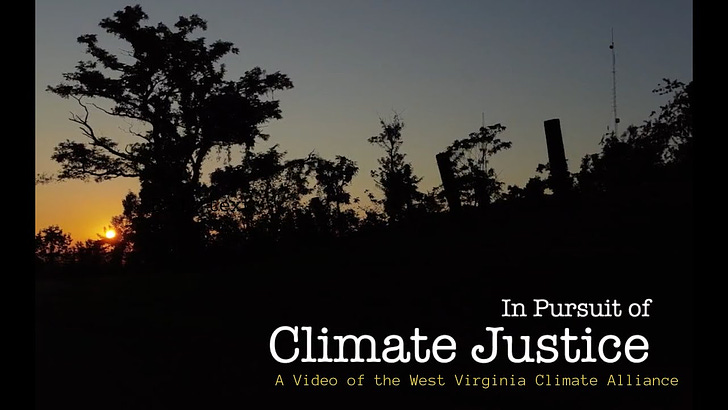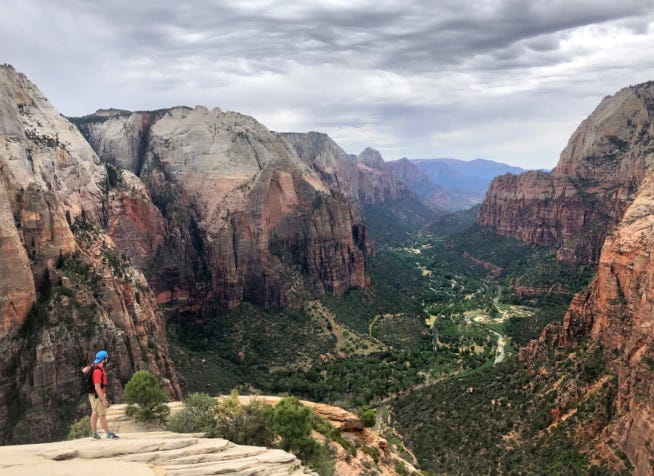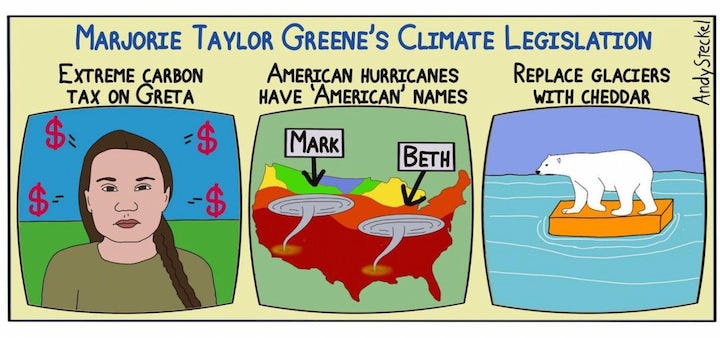What does 'Climate Justice' mean?
A new video explores why the climate crisis hits hardest in communities of color and low-income neighborhoods | september2021
Editor’s Note
Raging climate wildfires. Torrential flooding and disastrous droughts. Deadly fossil fuel emissions and poisonous wastes. The headlines are full of the 1,001 ways the climate crisis can harm us, our families and where we live. Communities of color and low-income families have long suffered from living on the front lines of such dangers. A new video I helped craft for the West Virginia Climate Alliance explores how the broad concepts of ‘fairness’ and ‘justice’ are actually key to climate activism and legislative action. Below the video are some quotes from those interviewed. Read on and be well! | EDITOR: Douglas John Imbrogno | wvclimatealliance@gmail.com | If this newsletter was forwarded to you, free subscribe at: ChangingClimateTimes.substack.com
Climate justice for all
Click to watch. YOUTUBE SHARE LINK: youtu.be/MUrYkOJTtEA
PAM NIXON, Chair of the Charleston WV branch of the NAACP:
“This is Appalachia. And we're looked at in a different way than it appears that the rest of the country is looked at. At least back in the ‘30s and ‘40s, we were considered hillbillies. The chemical plants came here around the 1940s, right during and after World War Two. We needed jobs. And they would do the jobs at the expense of their health, because they had to take care of their family. And it's not just the chemical plants. This state is rich in natural resources. Same thing with the coal mines. But they all seem to be owned by out-of-state businesses. The physical impact, the health impact, doesn't affect the families of the owners of these large companies.”
ANGIE ROSSER, Director of the West Virginia Rivers Coalition
“Some people will be more affected just in terms by where they live. If they're living in floodplains, they're certainly going to be more affected. But also the inequities in terms of access and resources and resiliency — all of that needs to be stacked up to truly understand how we must tackle this process, this crisis, and put equity at the center of solutions.”
“I'm sure that [Martin Luther King Jr. would talk about climate change as being the fourth evil of our world that we are perpetuating.” ~ Rev. Ron English
REV. RON ENGLISH, President of the Charleston WV branch of the NAACP
As a young man, Ron English served as a ministerial assistant to Martin Luther King Jr., and after his assassination in 1968, gave a prayer at his funeral. King spoke often of “the three sins of the American system as militarism, racism, and economic injustice,” said English, who goes on to make a powerful point about how King might see the climate crisis today: “I'm sure that he would talk about climate change as being the fourth evil of our world that we are perpetuating.”
Barking up the wrong trees
Photo by Mike Petrucci on Unsplash
Will planting a million-billion-trillion trees reverse climate change? Not so fast, say experts, as many such campaigns are easy outs for companies, billionaires, and politicians. “It’s a charming notion that’s much easier for companies or countries to act on, compared with doing the hard work of slashing greenhouse emissions,” says a VOX piece by Benji Jones. “People often think, ‘We’ll just plant trees and call that a restoration project, and we’ll exonerate our carbon sins,’” said Robin Chazdon, a forest researcher. Usually, she adds, “that fails.” Instead of planting scads of trees we should focus on growing trees for the long haul, protecting and restoring ecosystems beyond just forests, and empowering local communities best positioned to care for them.
READ ON: The surprising downsides to planting trillions of trees: Large tree-planting initiatives often fail — and some have even fueled deforestation. There’s a better way.
The hot trend in national parks
A hiker takes in the view from the top of Angels Landing in Utah’s Zion National Park. (Marc Martin / Los Angeles Times)
Getting far more people to pay attention to the most pressing issue of our day — you know, the survival of our species and millions of others as we slowly boil in our planetary pot — is a constant cry from the hearts of frustrated climateers. My view is we throw the kitchen sink at things, moving among multiple communities of interest and speaking to their passions. A recent issue of “Boiling Point,” Sammy Roth’s very-good LA Times climate newsletter, serves as a shout-out to the masses of Americans who vacation in national parklands to renew work-worn, life-bedraggled selves. Pay attention or you won’t be able to park yourself in parklands comfortably unless we tackle the climate crisis right now:
SAMMY ROTH: “Glaciers vanishing in Glacier National Park. Sand dunes blowing away at White Sands in New Mexico. Wildfire smoke obscuring the Tetons, flames licking at the sequoias near their namesake park, Joshua trees dying out in their namesake park. These are just some of the ways that global heating is reshaping America’s public lands. If you care about endangered species, it’s not great. If you think we should preserve ecosystems that support human health, it’s no better. And if you enjoy hiking in wildlands during the summer — like I do — you might want to prepare yourself …”
READ ON: Love the national parks? Get ready for them to heat up
FINAL WORDS
Here’s Pam Nixon again, cutting to the chase in the video above:
PAM NIXON: “At the rate we're going and seeing all of the problems that are occurring here on Mother Earth, as a result she's crying out with the drought and with the fires and with extreme weather events, from the tornadoes to the hurricanes. She's saying that she needs help, she can't do it by herself. And we need to take responsibility. We need to be good shepherds of the earth.”
PS | You Promised Climate Cartoons.
I did, way back in ISSUE 1. Here is one by the always wonderful Andy Steckel.
Share this newsletter:
If this newsletter was forwarded to you, free subscribe at: ChangingClimateTimes.substack.com





